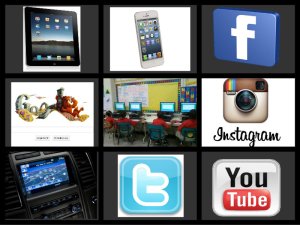Educators are faced with the difficult task of educating a class of student who not only learn at different pace, but they also learn differently. Teachers now more than ever must learn to differentiate instruction in order to meet the learning needs of all children. As Howard Gardner says, “The biggest mistake of past centuries in teaching has been to treat all children as if they were variants of the same individual and thus to feel justified in teaching them all in the same way.” Teachers are dedicated to creating differentiated classrooms as an opportunity to maximize student growth and to promote individual student success.
If instruction is not differentiated, educators risk teaching to only a small group of students or none at all. As I studied the different learning styles, certain students came to mind as I read characteristics of students who possess particular learning styles. Auditory learners need to hear what they are learning. I have students who like to read out loud or take to themselves as they complete their assignments. My visual learners love to use a variety of colors. They learn better when dealing with real objects or pictures of objects being described. Majority of my class are physical or kinesthetic learners. They learn best when they are able to use their bodies and hands. They are very active learners. I spoke of my verbal or linguistic learner before. She learns best with written and spoken words. My logical learner is great with reasoning and can recognize patterns easily. My class president is a social learner. She’s a great listener and she loves to ask questions. She communicates well verbally. I have a solitary learner also. He learns better when he works along.
Differentiating instruction is easier said than done. It’s a method for reaching all learners. However, it is a difficult task to accomplish. I agree with Dr. Ormrod, students should be taught strategies to help them learn in setting that does not necessary appeal to their particular learning styles. I often use mnemonics because, just as Ormrod stated, some information cannot be interpreted in any other way. This strategy helped me through college. However, this is not a strategy I would suggest for elementary students, maybe high school or middle school. The strategies I like most are elaboration and comprehension monitoring. I use comprehension monitoring as a guided reading strategy for my students. I often allow them to read chapter books in groups and give them questions to answer at the end of each chapter to reassure they comprehend the story as they read. I use elaboration to help build on skills and show how one skill relates to the next. It’s most useful in math lessons.
Edutopia’s staff outlined in the article, “Why Integrate Technology into the Curriculum?: The Reasons are Many” several ways technology can improve learning and instruction in the classroom. Technology allows students to be intellectually challenged and provides them with a realistic snapshot of what the modern office looks like. The resources of the online world provide classrooms with interesting, diverse, and current learning materials. It allows students to connect with experts in the real world and provides opportunity for students to express their understanding through images, sounds, and text (2008).
When implementing technology into the curriculum, instructional designers must be sure technology integration occurs across the curriculum in ways that deepens and enhance the learning process. Technology integration must support active engagement, group participation, frequent interaction and feedback, and connection to real- world experts (2008). I agree with the Horizon Report of 2009. It speaks of the new emerging technology trends will be Game Based Learning (GBL). The report explains how online games offer opportunity for increase social interaction and civil engagement among learners (2009). The Horizon Report of 2012 states that Game Based Learning improving important skills such as collaboration, creativity and critical thinking (2012).
The Edutopia’s staff lists benefits of using technology tools to improve learning. According to the Edutopia’s staff tech tools offer students ways to experiment, observe phenomenon, and view results in graphic ways that assist in understanding, all of which improves learning in the science classes. However, the benefit of implementing across the curriculum is it encourages students to stay engaged, on task, and reduce behavioral problems in the classroom. These benefits indirectly improve learning and instruction in the classroom (2008).
Paquette gave a number of ways to effectively implement technology into the curriculum. It could be used for voice recording and reading assessment, voice and video recordings of learning experiences, presentations, Facetime, Skype, Kindle App for reading groups, and other apps such as Khan Academy, Skitch, Socrative, Nearpod, iMovie, Toontastic, ShowMe, and My Math App (Paquette, 2012). Paquette also mentioned some disadvantages of allow the use of technology in the classroom. It could sometimes become a distraction for those students who lose interest in the application the instructor implements and ventures off into another application that interests them (2012).
Edutopia Staff (2008, March 16) Why integrate technology into the curriculum? : The reasons
are many. Retrieved from http://www.edutopia.org/technology-integration-introduction
Gardner, H. (2003, April 21). Multiple intelligences after 20 years. Paper presented to the American Educational Research Association, Chicago, IL. Retrieved fromhttp://www.pz.harvard.edu/PIs/HG_MI_after_20_years.pdf
Johnson, L., Levine, A., & Smith, R. (2009). The Horizon Report (2009 ed.). Austin, TX: The
New Media Consortium. Retrieved from http://wp.nmc.org/horizon2009/
Paquette, A. (2012, December 4). Changing the model of 1:1 with byod. [Blog
message]. Retrieved from http://www.edutopia.org/blog/challenging-one-to-one-model-
Ormrod, J. “Learning Styles and Strategies”

